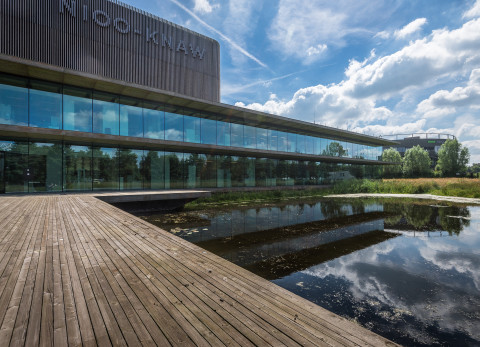Protect the night at Christmas!

Protect the night at Christmas!
Christmas is the season of light: even from space, all those holiday lights can be seen to shine brightly according to NASA. So what better time to offer practical tips on limiting the damage caused by artificial light to our flora and fauna?
About the effects of artificial light at night on nature, there is still a lot we don't know. A major project led by NIOO, LichtOpNatuur, is looking into how it affects animals that keep track of the length of day to time their yearly activities, and what the impact is of different colours of light. Results are expected in the coming year.
NIOO-researchers also participate in the Loss of Night Network (LoNNe), an EU COST Action that is developing guidelines for modern lighting technology and for lighting concepts that are ecologically, socially, and economically sustainable.
Light done right
A team of scientists that has worked together for four years as part of this European network is now for the first time publishing practical tips for exterior lighting. That's for the benefit of the environment and of humans too.
"Light has effects on plants and animals as well as on us humans," says NIOO researcher Kamiel Spoelstra. Even small quantities more or less can disturb the inner clock or interfere with whole ecosystems. "In the long term, this can affect biodiversity."
That's why it's vital that light at night be "done right", believe the researchers. Especially around Christmas, when "we light up the dark season with all sorts of exterior lighting."
Four tips
Key factors here are the colour, direction and intensity of the light, and last but not least the timing:
1) Avoid cold white light as far as possible: up to a colour temperature of 3000 Kelvin, artificial light is perceived as 'warm'. Anything above that may cause more problems relatively, say the NIOO researchers. For nature but also for humans: too much exposure to blue-white light disturbs your sleeping pattern. Problem: the recent trend towards LEDs and energy saving lamps has actually led to an increase of cold white light. "But with the right type of LEDs you can avoid this." So be extra careful what lights you hang in your tree or garden this Christmas!
2) Use lampshades to direct the light: if the first thing you think of is your grandmother's frilly floor lamp, then think again. Streetlights without suitable lampshades will shine in the eyes of pedestrians and into the sky, where the light spreads quickly and illuminates entire landscapes. Just remember that it's generally best for light to shine downwards, even though that might be tricky in the case of Christmas decorations...
3) Light streets as uniformly as possible, with low intensity: did you know that it takes the equivalent of just three candles to light a square metre of road? But if that sounds nice and Christmassy, just leave it up to the European Union to play Scrooge in reverse. "Let there be light" seems to be its adage, as recent European guidelines recommend much brighter values than are currently implemented in most municipalities. Compliance with those standards will only cause more light pollution, even though the researchers point out that lower lighting values do not in fact limit safety.
4) Adapt exterior lighting to times of use: after midnight - or even after 10 o' clock - less light is needed and streetlights may be safely dimmed. That would make a reduction of illumination by 50-80% possible. So make sure the stars can shine brightly this Christmas!
More information
LoNNe has published an illustrated flyer that aims to be a "user guide for outdoor lighting". You can download it from this page or from the LoNNe website.
The website of the LichtOpNatuur ("Light on Nature") project has information about various groups of plants and animals - e.g. butterflies, birds and bats - and how they respond to artificial light. The project is due to publish its conclusions in 2017.

